North Auckland, West Auckland > Private Hospitals & Specialists >
Rodney Surgical Centre
Private Surgical Service, General Surgery, ENT/ Head & Neck Surgery, Gastroenterology & Hepatology (Liver), Obstetrics and Gynaecology, Ophthalmology, Orthopaedics, Plastic Surgery, Urology, Endoscopy (Gastroenterology), Oncology
In case of emergency please call 911 or visit the nearest A&E Centre
Today
Description
Rodney Surgical Centre (RSC) offers the latest expertise and technology. We are the only private hospital between Albany and Whangārei with two state-of-the-art operating theatres, a procedure and consulting rooms conveniently located in Warkworth with plenty of free parking.
The benefit for our patients is that they no longer need to travel to Auckland for the very best healthcare.
Specialists services
See below for a list of our specialist services and surgical consultants:
Dr Andrew MacGill is a GP with a special interest in skin cancer. He holds weekly skin cancer clinics at the Rodney Surgical Centre in Warkworth.
Dr David Hassan is a GP with a special interest in skin conditions.
Susan Durney is a cosmetic nurse specialist.
Michelle Wood is a nurse specialist who undertakes Mole Map checks.
For Patients
Click here for useful information that will help you prepare for your admission, your surgery and your discharge home. Please also click on the Coming in for Surgery tab.
Click here for an admission form which can be filled out online.
Consultants
-
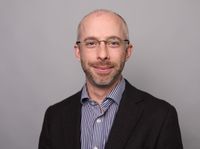
Dr Nathan Atkinson
Gastroenterologist
-

Mr Ali Bayan
Orthopaedic Surgeon
-
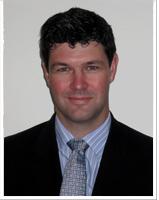
Mr Brendan Coleman
Orthopaedic Surgeon
-

Dr Charlotte Daker
Gastroenterologist
-

Dr Reshma Desai
Gynaecology
-
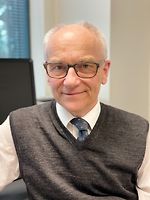
Dr Mark Donaldson
Ophthalmologist
-
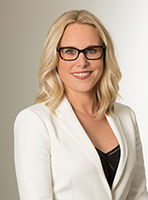
Dr Katherine Gale
General Surgeon
-

Mr Mark Gittos
Plastic Surgeon
-
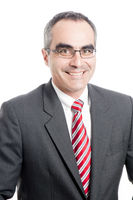
Mr Jonathan Koea
General Surgeon & Endoscopist
-
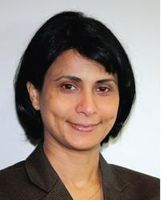
Dr Padmaja Koya
Gynaecology
-
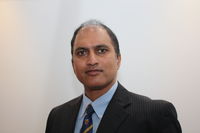
Mr Madhu Koya
Urologist
-
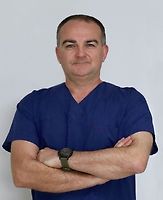
Mr Richard Martin
General Surgeon
-

Dr Anna McInnes
Gynaecology
-
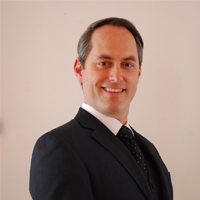
Mr John Mutu-Grigg
Orthopaedic Surgeon
-
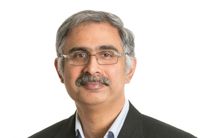
Dr Itty Mathew Francis Nadakkavukaran
Gastroenterologist/Endoscopist
-
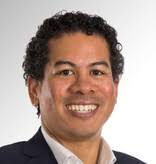
Mr Christopher Powell
Plastic Surgeon
-
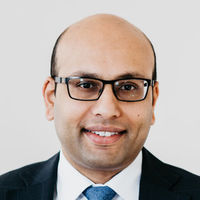
Mr Siraj Rajaratnam
General Surgeon
-

Dr Zoe Raos
Gastroenterologist
-
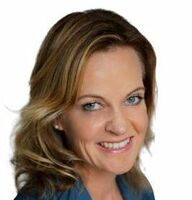
Dr Melissa Rossaak
Orthopaedic Surgeon
-

Dr Charlotte Rowan
Gastroenterologist
-
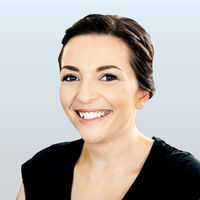
Dr Abbey Wrigley
Oncologist
Ages
Child / Tamariki, Youth / Rangatahi, Adult / Pakeke, Older adult / Kaumātua
How do I access this service?
Referral
GP or self referral for initial consultations
Contact us
Make an appointment
Fees and Charges Categorisation
Fees apply
Fees and Charges Description
Please contact us on (09) 425 1190 for estimates on the cost of your proposed surgery.
Hours
| Mon – Fri | 8:00 AM – 5:00 PM |
|---|
Services
Rodney Surgical Centre is leading the way with a scientifically-proven and more natural alternative to breast reconstruction for women following breast cancer surgery. The same no-knife procedure can be used for breast augmentation and defect corrections.
Rodney Surgical Centre is leading the way with a scientifically-proven and more natural alternative to breast reconstruction for women following breast cancer surgery. The same no-knife procedure can be used for breast augmentation and defect corrections.
Rodney Surgical Centre is leading the way with a scientifically-proven and more natural alternative to breast reconstruction for women following breast cancer surgery. The same no-knife procedure can be used for breast augmentation and defect corrections.
Cosmetic or aesthetic surgery improves appearance or body image by reshaping features of the face or body e.g. breast enlargement, face lift, liposuction. For further information on breast reconstruction and augmentation please see Breast Surgery.
Cosmetic or aesthetic surgery improves appearance or body image by reshaping features of the face or body e.g. breast enlargement, face lift, liposuction. For further information on breast reconstruction and augmentation please see Breast Surgery.
Cosmetic or aesthetic surgery improves appearance or body image by reshaping features of the face or body e.g. breast enlargement, face lift, liposuction.
For further information on breast reconstruction and augmentation please see Breast Surgery.
Endoscopy is the process of looking inside body cavities, using very a tiny camera attached to the end of a long, flexible tube (endoscope). Images from the camera are sent to a television monitor so that the doctor can direct the movement of the endoscope. It is also possible to pass different instruments through the endoscope to allow small samples or growths to be removed. Endoscopy allows a doctor to make a diagnosis either by seeing directly what is causing the problem or by taking a small tissue sample for examination under a microscope (biopsy). Endoscopy can also be used as a treatment e.g. for removal of swallowed objects in the oesophagus (food pipe), healing of lesions etc. Gastroscopy Gastroscopy allows examination of the upper part of your digestive tract i.e. oesophagus (food pipe), stomach and duodenum (top section of the small intestine), by passing a gastroscope (long, flexible tube with a camera on the end) through your mouth and down your digestive tract. Images from the camera are displayed on a television monitor. Sometimes a small tissue sample (biopsy) will need to be taken during the procedure for later examination at a laboratory. For more information please click here. Colonoscopy Colonoscopy is the examination of your colon (large bowel) using a colonoscope (long, flexible tube with a camera on the end). The colonoscope is passed into your rectum (bottom) and then moved slowly along the entire colon, while images from the camera are displayed on a television monitor. The procedure takes from 10 minutes to an hour. Sometimes a small tissue sample (biopsy) will need to be taken during the procedure for later examination at a laboratory. For more information please click here.
Endoscopy is the process of looking inside body cavities, using very a tiny camera attached to the end of a long, flexible tube (endoscope). Images from the camera are sent to a television monitor so that the doctor can direct the movement of the endoscope. It is also possible to pass different instruments through the endoscope to allow small samples or growths to be removed. Endoscopy allows a doctor to make a diagnosis either by seeing directly what is causing the problem or by taking a small tissue sample for examination under a microscope (biopsy). Endoscopy can also be used as a treatment e.g. for removal of swallowed objects in the oesophagus (food pipe), healing of lesions etc. Gastroscopy Gastroscopy allows examination of the upper part of your digestive tract i.e. oesophagus (food pipe), stomach and duodenum (top section of the small intestine), by passing a gastroscope (long, flexible tube with a camera on the end) through your mouth and down your digestive tract. Images from the camera are displayed on a television monitor. Sometimes a small tissue sample (biopsy) will need to be taken during the procedure for later examination at a laboratory. For more information please click here. Colonoscopy Colonoscopy is the examination of your colon (large bowel) using a colonoscope (long, flexible tube with a camera on the end). The colonoscope is passed into your rectum (bottom) and then moved slowly along the entire colon, while images from the camera are displayed on a television monitor. The procedure takes from 10 minutes to an hour. Sometimes a small tissue sample (biopsy) will need to be taken during the procedure for later examination at a laboratory. For more information please click here.
Endoscopy is the process of looking inside body cavities, using very a tiny camera attached to the end of a long, flexible tube (endoscope). Images from the camera are sent to a television monitor so that the doctor can direct the movement of the endoscope. It is also possible to pass different instruments through the endoscope to allow small samples or growths to be removed.
Endoscopy allows a doctor to make a diagnosis either by seeing directly what is causing the problem or by taking a small tissue sample for examination under a microscope (biopsy).
Endoscopy can also be used as a treatment e.g. for removal of swallowed objects in the oesophagus (food pipe), healing of lesions etc.
Gastroscopy
Gastroscopy allows examination of the upper part of your digestive tract i.e. oesophagus (food pipe), stomach and duodenum (top section of the small intestine), by passing a gastroscope (long, flexible tube with a camera on the end) through your mouth and down your digestive tract. Images from the camera are displayed on a television monitor. Sometimes a small tissue sample (biopsy) will need to be taken during the procedure for later examination at a laboratory.
For more information please click here.
Colonoscopy
Colonoscopy is the examination of your colon (large bowel) using a colonoscope (long, flexible tube with a camera on the end). The colonoscope is passed into your rectum (bottom) and then moved slowly along the entire colon, while images from the camera are displayed on a television monitor. The procedure takes from 10 minutes to an hour. Sometimes a small tissue sample (biopsy) will need to be taken during the procedure for later examination at a laboratory.
For more information please click here.
Ophthalmology is the branch of specialist medicine that is focused on the health of eyes and their surrounding tissues, including muscles, bones, eyelids, and tear production/drainage systems. Your eye is the organ of vision and consists of the cornea (the outer clear layer), the sclera (the white of the eye), the iris (the coloured part), the lens (lies behind the iris) and the retina (the light-sensitive lining at the back of the eye). Your eyes ‘see’ by focusing light that enters the eye onto the retina which sends the image to the brain by the optic nerve. Ophthalmologists are doctors who are trained in the study of eyes. Most will be trained in eye surgery, and may have particular areas of interest or expertise.
Ophthalmology is the branch of specialist medicine that is focused on the health of eyes and their surrounding tissues, including muscles, bones, eyelids, and tear production/drainage systems. Your eye is the organ of vision and consists of the cornea (the outer clear layer), the sclera (the white of the eye), the iris (the coloured part), the lens (lies behind the iris) and the retina (the light-sensitive lining at the back of the eye). Your eyes ‘see’ by focusing light that enters the eye onto the retina which sends the image to the brain by the optic nerve. Ophthalmologists are doctors who are trained in the study of eyes. Most will be trained in eye surgery, and may have particular areas of interest or expertise.
Ophthalmology is the branch of specialist medicine that is focused on the health of eyes and their surrounding tissues, including muscles, bones, eyelids, and tear production/drainage systems. Your eye is the organ of vision and consists of the cornea (the outer clear layer), the sclera (the white of the eye), the iris (the coloured part), the lens (lies behind the iris) and the retina (the light-sensitive lining at the back of the eye). Your eyes ‘see’ by focusing light that enters the eye onto the retina which sends the image to the brain by the optic nerve.
Ophthalmologists are doctors who are trained in the study of eyes. Most will be trained in eye surgery, and may have particular areas of interest or expertise.
General surgery deals with a wide range of conditions within the abdomen, breast, neck and skin.
General surgery deals with a wide range of conditions within the abdomen, breast, neck and skin.
General surgery deals with a wide range of conditions within the abdomen, breast, neck and skin.
What is Gynaecology? Gynaecology is the area of medicine that deals with health issues and conditions that are specific to women. This generally includes the female reproductive organs and genitalia. The reproductive organs consist of the ovaries that release an egg every month, the fallopian tubes that lead from the ovaries, the uterus (womb), which is where a baby will grow if the egg is fertilised during sexual intercourse, the cervix (opening of the uterus) and the vagina. Laparoscopy Many gynaecological investigations are performed by laparoscopy. This is a procedure to view the inside of the abdomen (stomach) through a specially lit type of mini telescope (laparoscope) that is inserted through a small cut in the abdomen. The laparoscope also contains a small camera that sends pictures to a screen that the doctor can watch. Sometimes surgical procedures (keyhole surgery) can be performed at the same time. A laparoscopy is performed under a general anaesthetic (you are asleep).
What is Gynaecology? Gynaecology is the area of medicine that deals with health issues and conditions that are specific to women. This generally includes the female reproductive organs and genitalia. The reproductive organs consist of the ovaries that release an egg every month, the fallopian tubes that lead from the ovaries, the uterus (womb), which is where a baby will grow if the egg is fertilised during sexual intercourse, the cervix (opening of the uterus) and the vagina. Laparoscopy Many gynaecological investigations are performed by laparoscopy. This is a procedure to view the inside of the abdomen (stomach) through a specially lit type of mini telescope (laparoscope) that is inserted through a small cut in the abdomen. The laparoscope also contains a small camera that sends pictures to a screen that the doctor can watch. Sometimes surgical procedures (keyhole surgery) can be performed at the same time. A laparoscopy is performed under a general anaesthetic (you are asleep).
What is Gynaecology?
Gynaecology is the area of medicine that deals with health issues and conditions that are specific to women. This generally includes the female reproductive organs and genitalia. The reproductive organs consist of the ovaries that release an egg every month, the fallopian tubes that lead from the ovaries, the uterus (womb), which is where a baby will grow if the egg is fertilised during sexual intercourse, the cervix (opening of the uterus) and the vagina.
Laparoscopy
Many gynaecological investigations are performed by laparoscopy. This is a procedure to view the inside of the abdomen (stomach) through a specially lit type of mini telescope (laparoscope) that is inserted through a small cut in the abdomen. The laparoscope also contains a small camera that sends pictures to a screen that the doctor can watch. Sometimes surgical procedures (keyhole surgery) can be performed at the same time. A laparoscopy is performed under a general anaesthetic (you are asleep).
Consultations and treatment
Consultations and treatment
Orthopaedics deals with conditions of the musculoskeletal system (bones and joints of the limbs and spine). The specialty covers a range of different types of conditions starting with congenital (conditions which children are born with) through to degenerative (conditions relating to the wearing out of joints). The field of orthopaedics includes trauma, where bones are broken or injuries are sustained to limbs. Other conditions that are covered by orthopaedics are metabolic conditions, neurological and inflammatory conditions.
Orthopaedics deals with conditions of the musculoskeletal system (bones and joints of the limbs and spine). The specialty covers a range of different types of conditions starting with congenital (conditions which children are born with) through to degenerative (conditions relating to the wearing out of joints). The field of orthopaedics includes trauma, where bones are broken or injuries are sustained to limbs. Other conditions that are covered by orthopaedics are metabolic conditions, neurological and inflammatory conditions.
Orthopaedics deals with conditions of the musculoskeletal system (bones and joints of the limbs and spine). The specialty covers a range of different types of conditions starting with congenital (conditions which children are born with) through to degenerative (conditions relating to the wearing out of joints). The field of orthopaedics includes trauma, where bones are broken or injuries are sustained to limbs.
Other conditions that are covered by orthopaedics are metabolic conditions, neurological and inflammatory conditions.
Plastic surgery covers a wide range of different surgical procedures that repair, reconstruct or replace structures in many different parts of the body including the skin, face and head, hands, breast and stomach. Plastic surgery does not involve the use of plastic materials. Reconstructive surgery is performed on parts of the body that are abnormal or have been affected by a birth defect, accident or disease. This includes cleft lip and palate repair, scar revision or reconstruction (including skin grafts) following burns. Surgery is usually performed to improve function, but may also be performed to bring the appearance of a part of the body as close as possible to normal. For further information on breast procedures please see Breast Surgery.
Plastic surgery covers a wide range of different surgical procedures that repair, reconstruct or replace structures in many different parts of the body including the skin, face and head, hands, breast and stomach. Plastic surgery does not involve the use of plastic materials. Reconstructive surgery is performed on parts of the body that are abnormal or have been affected by a birth defect, accident or disease. This includes cleft lip and palate repair, scar revision or reconstruction (including skin grafts) following burns. Surgery is usually performed to improve function, but may also be performed to bring the appearance of a part of the body as close as possible to normal. For further information on breast procedures please see Breast Surgery.
Plastic surgery covers a wide range of different surgical procedures that repair, reconstruct or replace structures in many different parts of the body including the skin, face and head, hands, breast and stomach. Plastic surgery does not involve the use of plastic materials.
Reconstructive surgery is performed on parts of the body that are abnormal or have been affected by a birth defect, accident or disease. This includes cleft lip and palate repair, scar revision or reconstruction (including skin grafts) following burns. Surgery is usually performed to improve function, but may also be performed to bring the appearance of a part of the body as close as possible to normal.
For further information on breast procedures please see Breast Surgery.
There are three main types of skin cancers: basal cell carcinoma, squamous cell carcinoma and malignant melanoma. Surgery to remove skin lesions usually involves local anaesthesia (the area around the scar is numbed by injecting a local anaesthetic) and stitches. You may or may not have a dressing put on the wound and it is important to keep the area dry for 24 hours. Stitches may be removed in 1-2 weeks. You may need to take a few days off work after the surgery.
There are three main types of skin cancers: basal cell carcinoma, squamous cell carcinoma and malignant melanoma. Surgery to remove skin lesions usually involves local anaesthesia (the area around the scar is numbed by injecting a local anaesthetic) and stitches. You may or may not have a dressing put on the wound and it is important to keep the area dry for 24 hours. Stitches may be removed in 1-2 weeks. You may need to take a few days off work after the surgery.
There are three main types of skin cancers: basal cell carcinoma, squamous cell carcinoma and malignant melanoma.
Surgery to remove skin lesions usually involves local anaesthesia (the area around the scar is numbed by injecting a local anaesthetic) and stitches. You may or may not have a dressing put on the wound and it is important to keep the area dry for 24 hours. Stitches may be removed in 1-2 weeks. You may need to take a few days off work after the surgery.
Urologists are trained to diagnose, treat, and manage urological disorders. The organs covered by urology include the kidneys, ureters, urinary bladder, urethra, and the male reproductive organs.
Urologists are trained to diagnose, treat, and manage urological disorders. The organs covered by urology include the kidneys, ureters, urinary bladder, urethra, and the male reproductive organs.
Urologists are trained to diagnose, treat, and manage urological disorders. The organs covered by urology include the kidneys, ureters, urinary bladder, urethra, and the male reproductive organs.
Disability Assistance
Wheelchair access, Wheelchair accessible toilet, Mobility parking space, Assistance to move around, More space to move around, A longer appointment time, Support to make decisions
Document Downloads
- Admission Form (PDF, 97 KB)
- Useful Information (PDF, 376.9 KB)
Visiting Hours
Anytime during opening hours
Refreshments
Refreshments are provided for our patients post procedure as appropriate.
Travel Directions
From the South
As you enter Warkworth on State Highway 1, at the first set of traffic lights take the free left turn into Woodcocks Road. Take the third left into Morrison Drive and Rodney Surgical Centre is at the top of the hill, last on the left. Number 77.
From the North
As you pass through Warkworth on State Highway 1, at the last set of traffic lights before leaving Warkworth (with Mahurangi College on the corner) turn right into Woodcocks Road. Take the third left into Morrison Drive and Rodney Surgical Centre is at the top of the hill, last on the left. Number 77.
Parking
There is ample free off street parking allocated for our patients at the surgery.
Pharmacy
There is a pharmacy onsite HealthHub Pharmacy • Healthpoint
Other
"The referrers assistant" is available through Care Select. GPs can make a surgical referral, with or without a named specialist, directly to Rodney Surgical Centre. We will match your patient to the next available appointment with a local specialist or search further afield for the best option for your patient by liaising directly with them to meet their needs.
Website
Contact Details
-
Phone
(09) 425 1190 or Toll Free 0800 425 007
-
Fax
(09) 425 0115
Healthlink EDI
rodneysc
Email
Website
GPs can also direct refer through "the referrers assistant" via Care Select
77 Morrison Dr
Warkworth
Auckland 0910
Street Address
77 Morrison Dr
Warkworth
Auckland 0910
Postal Address
PO Box 317
Warkworth 0941
New Zealand
Was this page helpful?
This page was last updated at 12:40PM on April 8, 2024. This information is reviewed and edited by Rodney Surgical Centre.

